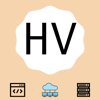If you're a Flatiron School student, you're familiar with the blog writing requirement--it's great practice for communicating what you have learned in technical terms, and you might end up helping another person on their coding journey.
I've been a writer longer than I've been a programmer, so I was stoked to find the writing component was part of this course. But when it came to writing a blog post for my first web development project, I wasn't sure what to include. My first project post was less technical and more personal. Now that I've just submitted my fourth project, I have a better idea of what I want my blog posts to say as I approach applying for jobs.
I've been reading through the Career Prep course this week, and this lesson is what inspired me to write this post.
A Note to Start
Formality
Something I didn't consider as I wrote my first couple blog posts was that your prospective employers, hiring managers, or Twitter connections will be reading these posts, so it's best to keep them on the more formal side. Some of my earlier posts included things that were going on in my personal life that prevented me from working on my project. I have grown a lot since I started this course and now I'm reading my older posts rolling my eyes--and I'll have to edit them soon because I don't think they are a good depiction of who I am. Let me save you from having to do the same thing--write your posts like you're going to share them on LinkedIn or email them to a prospective employer.
Include Photos, Screenshots, or GIFs When Possible
When I worked as a PR writer I was told something that shocked my little English major heart: People will stop reading if they see more than four lines of text without a break. But after I heard that, I noticed it every time I was trying to read an article online. So do your best to say things succinctly and break up your paragraphs (sensibly). A great way to do this is to include photos, screenshots or GIFs of your project. It's also helpful to break things into sections with headers to give your readers a break from technical text.
Include Your Links
At the bottom of your post include links to your GitHub repository, your YouTube demo video, and social accounts like LinkedIn, or Twitter. If someone likes your project, make it easy for them to contact you or learn more.
Okay, now let's get to the project information.
1. A Summary of Your Project
Write two sentences about what your project does and how you thought of the idea.
2. Languages or Skills Implemented
In this second section, talk about how you built your project--what skills did you apply to build it? Nokogiri? Sinatra? Ruby on Rails? OAuth? Bootstrap? Sass? These are great things to identify for each project, because they are also things you will share on your resume and portfolio project summaries.
3. Highlight the Features
What does your project accomplish? What makes it unique compared to similar sites?
4. How You Jumped the Hurdles
What are some problems you encountered while working on the project and how did you resolve them? This is one of my favorite things to talk about--I keep a running log of issues, and links that helped me with the solutions in a Google Doc while I'm working on my project. Documenting issues like these demonstrates your problem solving skills to prospective employers, and could prove helpful to your fellow students or other developers working on similar projects.
5. What's Next
Talk about what you hope to add to your project in the future--are there features you left out for the sake of time? How could you improve the project in future revision?
That's all I have for now! I definitely have not followed all of these guidelines in my past blog posts, but I am hoping to go back and reformat my blog posts to follow this structure as I prepare my portfolio for job applications.
Are there any important tips I've missed?
-A
Connect with Me
GitHub
LinkedIn
Originally published on December 6, 2019.






Top comments (0)